4,000 BCE
Historical/Archival Event
"Indigenous cultures native to Mexico and the southwestern United States have used the peyote cactus in rituals to treat a variety of physical and psychological ailments, including alcoholism, for over 6,000 years.(Ref 1,2) The Native American Church was formed in the 1800s."
Indigenous cultures; peyote; rituals; treatment; alcohol use disorder
View Sources
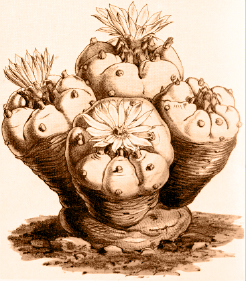
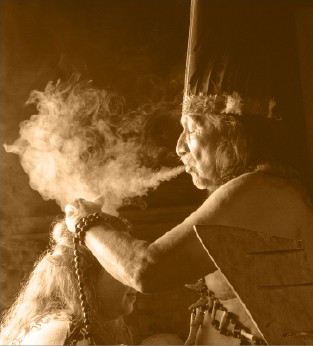
1,000 BCE
Historical/Archival Event
"Ayahuasca has been widely used in an array of shamanic rituals, social gatherings, and healing ceremonies for centuries by the indigenous peoples of the Amazon Basin in South America. Ceremonial consumption of ayahuasca brews is led by Shamans and takes place overnight, usually accompanied by guided meditation, song, and some purging, which is believed to release built-up emotions and negative energy. It has been used to heal several ailments, including anxiety, depression, and substance use disorder."
Ayahuasca; healing; shamanic rituals; addiction; substance use disorder
View Sources
1900s
Historical/Archival Event
"Iboga (sometimes spelled eboga or eboka) refers to a small variety of African plant species in the Apocynaceae family, principally Tabernanthe iboga and T. manii.(Ref 8) The active compound in this plant species is ibogaine... Iboga has been used for centuries as a medicine and sacrament in tribes of West Africa. Iboga is also used as an agent for alertness in hunter/gatherer tribes such as pygmy tribes in the Congo Basin of Central Africa.(Ref 9,10)"
anxiety, depression, and substance use disorder."Ibogaine; medicine
View Sources

1941
Scientific Event
A paper titled “A Cultist Drug-Addiction in an Indian Alcoholic” describing a case study of mescaline being used as an indigenous remedy for alcoholism.
peyote; mescaline; alcohol use disorder; Indigenous
View Sources
1951
Scientific Event
An early focus of LSD and mescaline research in the 1950s was alcoholism. Around the same time that Humphrey Osmond started research, other research teams studied the effects of mescaline and LSD on alcoholism and debated different methodologies for understanding the efficacy of psychedelics as a treatment for alcoholism.
Indigenous cultures; peyote; rituals; treatment; alcohol use disorder
View Sources
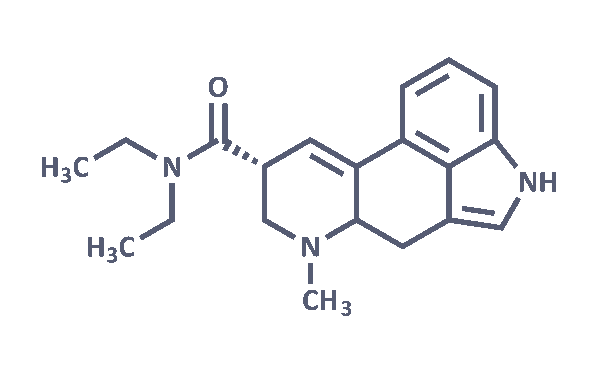
1953
Historical/Archival Event
An early focus of psychedelic research in the 1950s was addiction. In the 1951 researchers in Saskatchewan, Canada, led by Humphry Osmond and Abram Hoffer were the first to study addiction treatment with psychedelics, specifically using LSD and mescaline to treat alcoholism. "The alcoholism studies, which followed patients for up to two years, showed 50–90 per cent recovery rates. Hospital reforms included changing the designs of hospitals and training psychiatric nurses to help patients avoid frightening hallucinations. Staff were also trained to provide comfort and empathetic care."
LSD; mescaline; peyote; alcohol use disorder; Canada; Saskatchewan research program; set and setting
View Sources
1955
Historical/Archival Event
Harris Isbell administers doses of ibogaine of up to 300 mg to eight already detoxified morphine addicts at the U.S. Addiction Research Center in Lexington, Kentucky.
Ibogaine; dose; morphine use disorder
View Sources
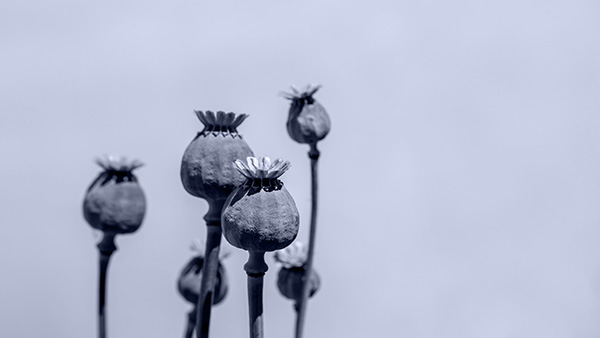
1956
Scientific Event
A paper titled “Studies on lysergic acid diethylamide (LSD-25). I. Effects in former morphine addicts and development of tolerance during chronic intoxication” describing LSD-25 treatment for morphine addiction.
LSD; morphine use disorder
View Sources
1956
Historical/Archival Event
On August 29, 1956, Bill Wilson (co-founder of Alcoholics Anonymous [AA]) was given LSD at the Los Angeles Veterans Administration hospital under the supervision of Dr. Sidney Cohen and Gerald Heard. Wilson had been sober for over two decades by the time he tried LSD, but he had been convinced of its potential in treating his lingering depression. Not only did the experience help with his depression, but it offered him a spiritual experience akin to the one that helped him get sober years prior. (The prior experience was actually due to the effects of "The Belladonna Cure.") Wilson soon advocated for LSD as a treatment for addiction because of its potential to help fellows of AA achieve a spiritual experience necessary to their recovery. These events were discovered in an archive of Wilson's materials.
LSD; alcohol use disorder; twelve-step groups
View Sources
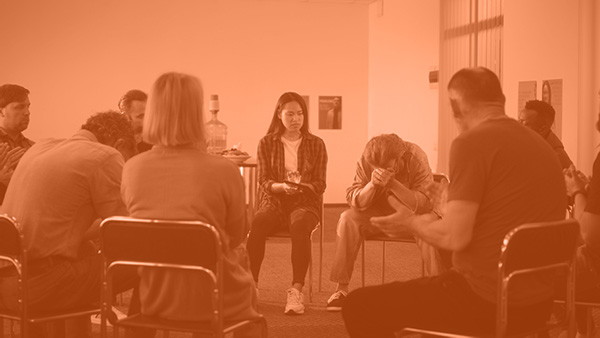
1958
Scientific Event
A preliminary study of alcoholism with various comorbidity treatment with LSD-25 or mescaline in conjunction with psychotherapy in 24 patients show promising results in some cases.
LSD; alcohol use disorder;
View Sources
1960
Historical/Archival Event
Purdue University Archives and Special Collections Charles Savage papers Patient Materials, 1960 - 1969 describes two former patients struggling with alcoholism were readmitted for additional LSD treatment under Dr. Walter Pahnke. The archival material contains information on Savage’s patients and personal correspondence with them. These documents have been copied so that confidential information, such as patient names, can be removed. The original documents are located in Series 14, Restricted Materials.
LSD, addiction, archival source, archive, fear, treatment
View Sources
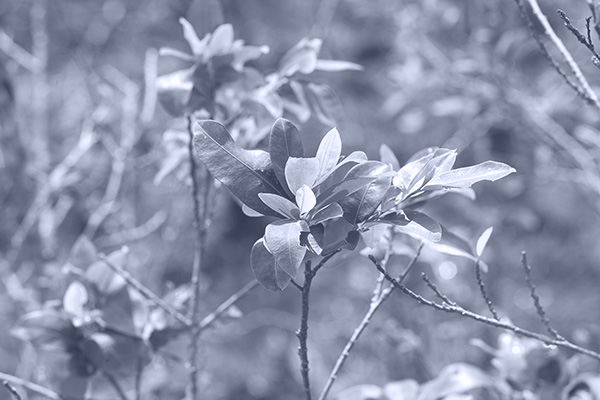
1962
Scientific Event
"The initial studies demonstrating Ibogaine's effects on cocaine and heroin dependence were conducted in a series of focus group experiments by H.S. Lotsof in 1962 and 1963."
In the United States, Howard Lotsof administers ibogaine to 19 individuals at dosages of 6 to 19 mg/kg, including 7 with opioid dependence who note an apparent effect on acute withdrawal symptomatology.
ibogaine; cocaine addiction; heroin addiction; opioid dependence; withdrawal
View Sources
1963
Scientific Event
A brief clinical report of an informal study utilizing a novel methodology featuring LSD in combination with hypnotherapy for the treatment of substance use disorder (SUD).
LSD; substance use disorder; addiction; hypnotherapy; treatment
View Sources

1965
Historical/Archival Event
The Second International Conference on the Use of LSD in Psychotherapy and Alcoholism took place at the South Oaks Hospital in Amityville, New York, May 8–10, 1965. Published in 1967 as The Use of LSD in Psychotherapy and Alcoholism.
LSD; alcohol use disorder; conference
View Web Source
1966
Scientific Event
"LSD in Psychotherapy and Alcoholism" a review of the Second International Conference on the Use of LSD in psychotherapy held at South Oaks Hospital Amityville, New York focusing on the use of LSD in alcoholism treatment.
LSD; alcohol use disorder
View Sources
1967
Historical/Archival Event
The book "The use of LSD in psychotherapy and alcoholism" was published, written by Harold Alexander Abramson.
LSD; alcohol use disorder
View Sources
1969
Scientific Event
A journal article "A Controlled Comparison of Lysergic Acid Diethylamide (LSD) and Dextroamphetamine in Alcoholics" describes a controlled comparison between LSD and dextroamphetamine as treatments in 72 alcoholic subjects with little to no psychotherapy and determined that LSD produced slightly better results but after a 6 months follow-up, results were the same between LSD and the dextroamphetamine treatment.
LSD; alcohol use disorder; dextroamphetamine
View Sources
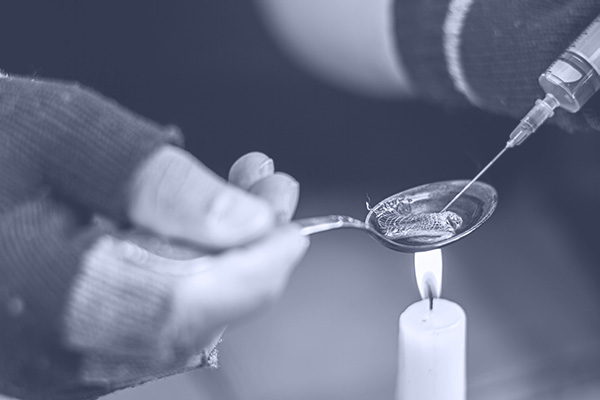
1973
Scientific Event
A journal article "Residential psychedelic (LSD) therapy for the narcotic addict. A controlled study" describes a 12-month study of a single, high dose of LSD along with psychotherapy in 78 subjects with chronic heroin addiction. Results suggest LSD psychotherapy treatment group had better outcomes compared to control group.
LSD; narcotic; addiction; heroin; set and setting; treatment
View Sources
1974
Scientific Event
A journal article "Peyote in the Treatment of Alcoholism Among American Indians" describes a treatment program involving both peyote ingestion and indigenous cultural set and setting of the Native American Church resulted in successful treatment of alcoholism.
Indigenous peoples; Peyote; mescaline; addiction; alcohol use disorder; treatment; set and setting
View Sources
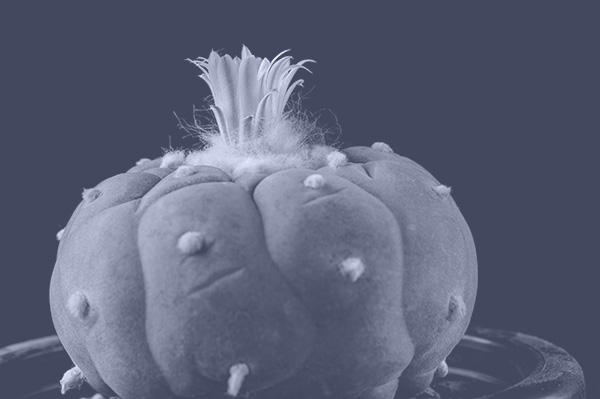
1985
Legal Event
The first U.S. Patent US4499096A granted in 02-12-1985 for treatment of narcotic addiction syndrome with ibogaine by patent inventor Howard S. Lotsof titled "Rapid method for interrupting the narcotic addiction syndrome". "Claim: 1. The method of treating heroin addiction comprising administering internally to the addict a dosage of between 6 mg and 19 mg per kg weight of the addict of ibogaine or a therapeutically active compound thereof or a mixture thereof." This patent is expired.
Ibogaine; addiction; opiate addiction; narcotic addiction; dose; delivery; treatment
View Sources
1986
Legal Event
U.S. Patent US4587243A granted in 05-06-1986 for treatment of cocaine and amphetamine abuse syndromes with ibogaine by patent inventor Howard S. Lotsof titled "Rapid method for interrupting the cocaine and amphetamine abuse syndrome". This patent is expired.
ibogaine; cocaine addiction; amphetamine addiction; treatment; dose; delivery
View Sources
1988
Scientific Event
The first preclinical study by researchers Dzoljic and Kaplan in the United States, the Netherlands and Canada to show efficacy in treating dependence to morphine in rats with ibogaine.
Preclinical study; ibogaine; morphine; treatment; withdrawal; animal model
View Sources
1989
Legal Event
U.S. Patent US4857523A granted in 08-15-1989 for treatment of alcohol dependency syndrome with ibogaine by patent inventor Howard S. Lotsof titled "Rapid method for attenuating the alcohol dependency syndrome". This patent is expired.
ibogaine; alcohol; dose; delivery; addiction
View Sources

1990
Historical/Archival Event
Treatments are conducted outside of conventional medical settings in the Netherlands involving the International Coalition of Addict Self-Help (ICASH), Dutch Addict Self Help (DASH), and NDA International (22,32-35).
In 1990, the International Coalition for Addict Self-Help (ICASH) reported their findings relative to nine individuals treated with ibogaine for drug dependency. That body of work has since been elaborated upon and expanded to include 21 case histories. These treatments occurred over the past five years. It also represents the second phase of human research with ibogaine, conducted in relation to the treatment of drug dependency. This report on four case histories represents cases 16-19 of the work in progress.
View Web Source
1990
Historical/Archival Event
Ibogaine was introduced to the addict community in 1990 by Howard Lotsof and Bob Sisko from the International Coalition for Addict Self Help (ICASH). The late Nico Adriaans, Josien Harms, and Geerte Frenken formed an informal organization, Dutch Addict Self Help (DASH), which today is called INTASH, in order to treat addicts with ibogaine.
addiction; self help; treatment; ICASH; DASH; INTASH
View Web Source
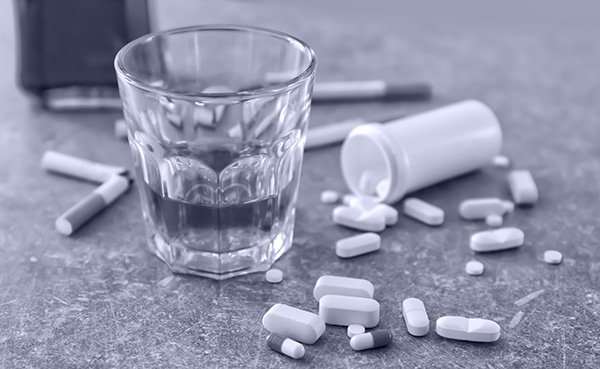
1990
Legal Event
WIPO(PCT) application WO1991018609A1 priority to Priority to US07/531,100 on 05-31-1990 for treatment of poly-drug dependency syndromes with ibogaine by patent inventor Howard S. Lotsof titled "Rapid method for interrupting or attenuating poly-drug dependency syndromes".
ibogaine; poly-drug addiction; treatment; dose; delivery; heroin; cocaine; alcohol; nicotine; caffeine; amphetamine; desoxyephedrine or methadone; drug combination
View Sources
1991
Legal Event
U.S. Patent US5026697A granted in 06-25-1991 for treatment of alcohol dependency syndrome with ibogaine by patent inventor Howard S. Lotsof titled "Rapid method for interrupting or attenuating the nicotine/tobacco dependency syndrome". This patent is expired.
ibogaine; treatment; addiction; nicotine; tobacco
View Sources
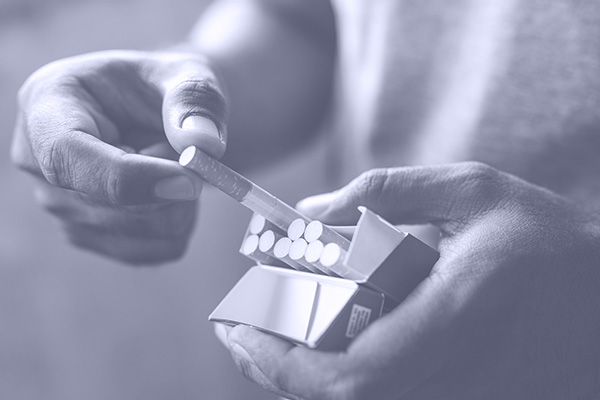
1992
Scientific Event
The first publication on research showing the mechanism of action and affinity of ibogaine for opiate receptors. Researchers suggest the anti-addictive properties of ibogaine may be due to their effects on sodium channels.
ibogaine; mechanism of action; opiate receptor; radioligands; sodium channels
View Sources
1992
Legal Event
U.S. Patent US5026697A granted in 10-06-1992 for treatment of poly-drug dependency syndromes with ibogaine by patent inventor Howard S. Lotsof titled "Rapid method for interrupting or attenuating poly-drug dependency syndromes". Same patent family as WIPO(PCT) application WO1991018609A1.
ibogaine; poly-drug addiction; treatment; dose; delivery; heroin; cocaine; alcohol; nicotine; caffeine; amphetamine; desoxyephedrine or methadone; drug combination
View Sources
1992
Historical/Archival Event
The Takiwasi Center, or "The Singing House" in Quechua language was established in Tarapoto in the Upper Peruvian Amazon region was by Jacques Mabit, M.D. in September 1992 to utilize ayahuasca for the treatment of addictions.
Ayahuasca; DMT; Peru; addiction; treatment center; indigenous knowledge
View Web Source
1993
Historical/Archival Event
FDA Advisory Panel meeting, chaired by Medical Review Officer Curtis Wright, is held to formally consider Investigational New Drug Application filed by Dr. Deborah Mash, Professor of Neurology at the University of Miami School of Medicine. Approval is given for human trials. The approved ibogaine dosage levels are 1, 2, and 5 mg/kg. The Phase I dose escalation study begins December 1993, but activity is eventually suspended (36).
FDA; ibogaine; treatment; human clinical trial; IND application
View Sources
1993
Scientific Event
A journal article titled "Euphorogenic properties of the serotonergic partial agonist m-chlorophenylpiperazine in cocaine addicts" report the administration of m-CPP a serotonin partial agonist to patients with cocaine addiction.
m-CPP; cocaine addiction
View Sources
1994
Historical/Archival Event
The National Institute on Drug Abuse (NIDA) holds a total of four Phase I/II protocol development meetings, which include outside consultants. The resulting draft protocol calls for the single administration of fixed dosages of ibogaine of 150 and 300 mg versus placebo for the indication of cocaine dependence (37).
NIDA; ibogaine; human clinical trial; cocaine; addiction; protocol
View Sources

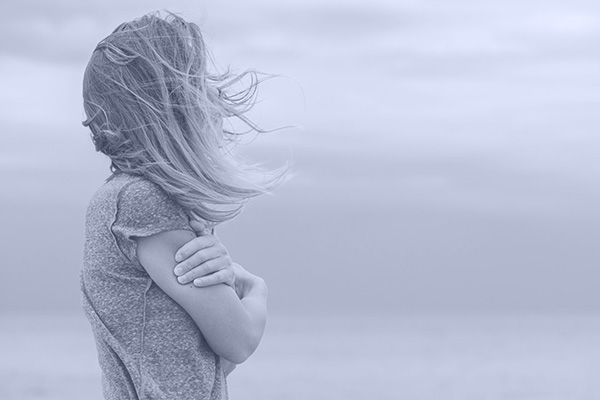
2003
Scientific Event
A review titled "Hallucinogens: an update" provides an overview of Salvia divinorum, MDMA, and synthetic hallucinogen analogs along with an evaluation of the current status of clinical research with hallucinogens focusing on anti-addiction studies.
hallucinogens, therapeutic, addiction, alcohol use disorder; Salvinorin A; MDMA; derivatives
View Sources
2003
Scientific Event
A manual produced by scientific researcher and ibogaine proponent Howard Lotsof that covers ibogaine dosage, screening protocols, safety considerations.
ibogaine, addiction, withdrawal, opioid, nicotine, smoking, dose, dose regimen, psychotherapy, treatment, set and setting, safety
View Sources
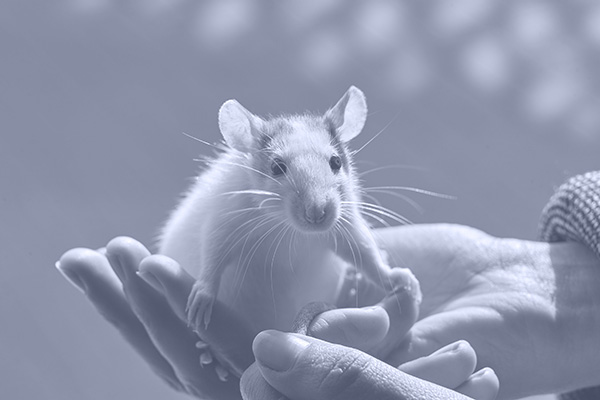
2006
Scientific Event
A journal article titled "18-Methoxycoronaridine (18-MC) and Ibogaine: Comparison of Antiaddictive Efficacy, Toxicity, and Mechanisms of Action " report a study in rats that compares the effect of either ibogaine or 18-MC on opioid withdrawal symptoms.
ibogaine, 18-MC, treatment, addiction, substance abuse, morphine, cocaine, alcohol, cardiovascular effects, dose, dose regimen; animal study
View Sources
2008
Scientific Event
A review titled "The ibogaine medical subculture" focuses on the use of ibogaine for the treatment of addiction and substance abuse through interviews, the internet, and collection of quantitative data.
Review; addiction; interviews; quantitative data
View Sources
2009
Scientific Event
A review titled "The use of hallucinogens in the treatment of addiction" describing hallucinogens in the context of their ability to treat addiction through anti-craving properties for alcoholism and substance abuse.
LSD, ibogaine, DMT, psychedelics, hallucinogens, therapeutic, addiction, alcohol use disorder
View Sources
2010
Historical/Archival Event
In 2010, Dr. Gabor Maté became interested in the traditional Amazonian plant medicine ayahuasca and its potential for treating addictions. He partnered with a Peruvian Shipibo ayahuasquero (traditional shamanic healer) and began leading multi-day retreats for addiction treatment, including ones in a Coast Salish First Nations community that were the subject of an observational study by health researchers from the University of Victoria and the University of British Columbia.
Gabor Maté; ayahuasca; Canada; plant medicine
View Web Source
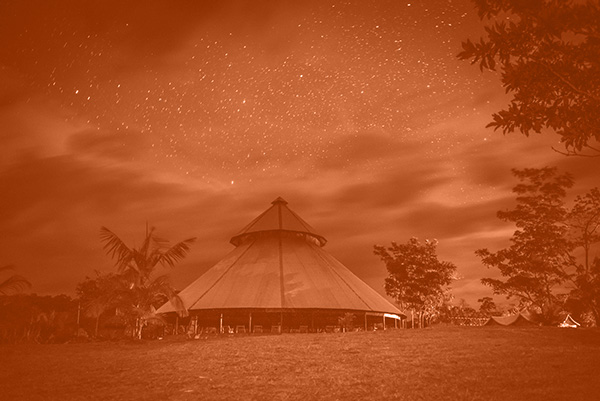
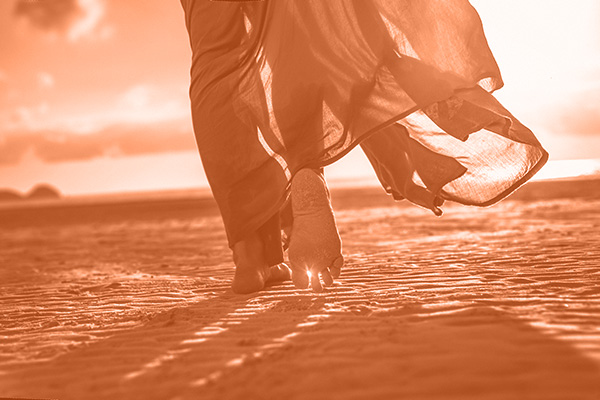
2011
Historical/Archival Event
The Book "The Psychedelic Explorer's Guide: Safe, Therapeutic, and Sacred Journeys" by James Fediman describes microdosing as a practice “to use sub-threshold doses of psychedelic drugs in an attempt to enhance cognitive tasks, to boost physical energy levels, to promote emotional balance, and to treat anxiety, depression and addiction.
depression, drug combinations, method of treatment, microdosing, non-hallucinogenic therapy, sub-perceptual; addiction
View Book Source
2011
Historical/Archival Event
Health Canada ordered Dr. Gabor Maté to stop treating addiction patients with ayahuasca. Article published "B.C. doctor (Dr. Gabor Maté) told to stop using hallucinogenic tea to help addicts." Cessation of treatment practice was due to ayahuasca being a controlled substance in Canada and Health Canada threatened to arrest Dr. Maté if he did not immediately stop his activities with ayahuasca for addition treatment.
Canada; indigenous knowledge; Vancouver; addiction; treatment; ayahuasca; DMT; sex addiction; cocaine; heroin; methamphetamine; Gabor Maté
View Sources
2013
Scientific Event
A journal article titled "Ayahuasca-Assisted Therapy for Addiction: Results from a Preliminary Observational Study in Canada". Results from this preliminary observational study of ayahuasca-assisted treatment for problematic substance use and stress delivered in a rural First Nations community in British Columbia, Canada show statistically significant improvements in addiction.
Ayahuasca-assisted treatment; DMT; addiction; treatment
View Sources
2014
Scientific Event
A small pilot study titled "Pilot Study of the 5-HT2AR Agonist Psilocybin in the Treatment of Tobacco Addiction" by researchers from Johns Hopkins University School of Medicine involving 15 patients describes psilocybin in treatment of tobacco addiction results in abstinence in 80% of participants at 6-month follow up and demonstrates safety and efficacy.
5HT2A receptor; addiction; tobacco; nicotine; psilocybin; substance use disorder; safety and feasibility study; smoking cessation treatment; cognitive behavioral therapy (CBT)
View Sources
2014
Scientific Event
A journal article titled "Psychedelics as medicines for substance abuse rehabilitation: evaluating treatments with LSD, Peyote, Ibogaine and Ayahuasca" describes a literature review in which authors discuss the potential therapeutic values of LSD, peyote, ibogaine and ayahuasca for treatment of addiction.
Review; LSD; peyote; mescaline; Ayahuasca; DMT; ibogaine; addiction
View Sources
2015
Scientific Event
A Phase 2 clinical trial study to evaluate the feasibility and estimate the efficacy of psilocybin-facilitated treatment for cocaine use. The study will also monitor the impact of psilocybin-facilitated treatment on the use of other drugs and outcomes relevant to cocaine involvement (e.g., criminal involvement).
Cocaine; addiction; psilocybin treatment
View Sources
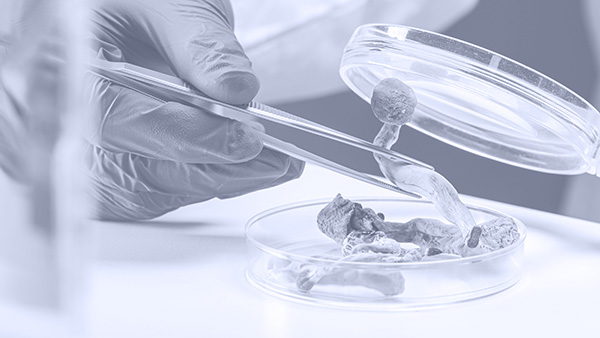
2015
Scientific Event
A journal article titled "Psilocybin-assisted treatment for alcohol dependence: a proof-of-concept study" describes a single group proof of concept study to quantify acute effects of psilocybin in alcohol-dependent participants.
Psilocybin; alcohol dependence; treatment
View Sources
2016
Scientific Event
A follow-up study titled "Long-term Follow-up of Psilocybin-facilitated Smoking Cessation" by researchers from Johns Hopkins University School of Medicine. At 12 months follow-up 12/15 original participants returned for follow up and nine participants (60%) were confirmed as smoking abstinent.
Psilocybin; smoking cessation; tobacco addiction; nicotine; long term follow-up; cognitive behavioral therapy (CBT)
View Sources
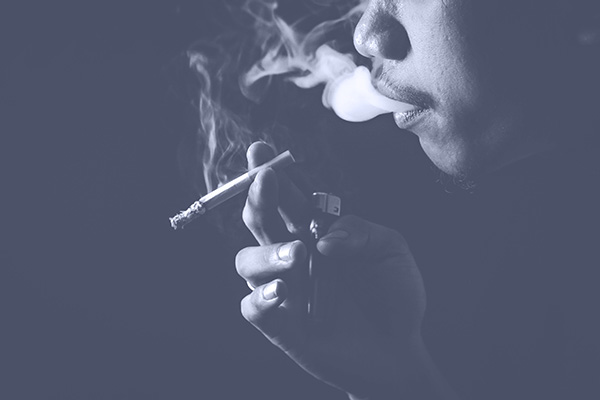
2016
Scientific Event
A journal article titled "Treating Addiction: Perspectives from EEG and Imaging Studies on Psychedelics" shows EEG and brain imaging studies evaluation the effects of psychedelics on the brain and efficacy in treating depression and alcohol-use disorder.
EEG; brain imaging; psychedelics; addiction
View Sources
2017
Scientific Event
A journal article titled "Treatment of opioid use disorder with ibogaine: detoxification and drug use outcomes" shows treatment of opioid use disorder with ibogaine n=30, results show decreased Addiction Severity Index Composite (ASIC) score with 50% of subjects report no opioid use 1 month post treatment.
Treatment, opioid use disorder, dose, heroin addiction, oxycodone addiction, detoxification, opioid dependence, cocaine dependence, NMDA receptor antagonist, glial-neurotrophic factor (GDNF)
View Sources
2017
Legal Event
W.O. Patent Application WO2018135943. titled "PSILOCYBIN AND/OR PSILOCIN IN COMBINATION WITH CANNABINOIDS AND/OR TERPENES" An international patent application describing methods of using psilocybin in combination with cannabinoids and/or terpenes to address mental disorders including addiction.
Drug combination; psilocybin; addiction; mental disorders; cannabinoids
View Sources
2017
Legal Event
W.O. Patent Application WO2018195455. titled "ASSESSING AND TREATING PSYCHEDELIC-RESPONSIVE SUBJECTS" An international patent application that describes methods and compositions identifying a likely positive response to a psychedelic agent in a mental or physical aspect including addiction.
Treatment; LSD, psilocybin, DOI, LA-SS-Az, 2C-BCB, ayahuasca, mescaline, 5-meo-DMT, ibogaine, addiction, mental disorders
View Sources
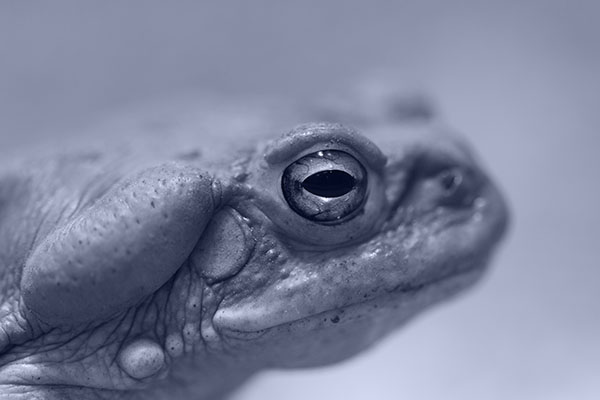
2018
Scientific Event
A study based on retrospective follow-up interviews 30 months after participants had been given psilocybin for smoking cessation.
classic psychedelics; qualitative; smoking cessation
View Sources
2018
Historical/Archival Event
An interview with the head of psychedelic research for the center for neuropsychopharmacology at Imperial College London, Dr. Carhart-Harris regarding the use of psychedelics in clinical studies including research in tobacco and alcohol addiction treatment.
LSD, psilocybin, MDMA, psychotherapy, psychedelic assisted therapy, treatment, obsessive compulsive disorder, end-of-life anxiety, depression, treatment-resistant depression, tobacco addiction, alcohol use disorder, eating disorders, PTSD, set and setting
View Web Source
2018
Scientific Event
A journal article titled "Ketamine for the treatment of addiction: Evidence and potential mechanisms" describes a literature review in which authors discuss the potential therapeutic values of ketamine for treatment of addiction.
Ketamine; addiction; treatment
View Sources
2018
Legal Event
U.S. patent US20170020894A1 granted in 09-04-2018 titled "Bile acid receptor agonism for treating addiction" describing compositions and methods for treating addiction to a dopaminergic psychostimulant including MDMA, PCP, ketamine…etc
dopaminergic receptor agonist; treatment; addiction; MDMA; PCP; ketamine
View Sources
2019
Legal Event
W.O. Patent Application WO2020157569. titled "Methods and compositions comprising a 5ht receptor agonist for the treatment of psychological, cognitive, behavioral, and/or mood disorders" An international patent application that describes using a 5HT receptor agonist such as psilocybin or psilocin to treat psychological, cognitive, behavioral and/or mood disorders including addiction.
Treatment; 5HT receptor agonist; serotonin receptor agonist; mood disorders; addiction; psilocybin; psilocin
View Sources
2019
Scientific Event
A journal article titled "Short-Term Treatment Effects of a Substance Use Disorder Therapy Involving Traditional Amazonian Medicine" describes a study at the Takiwasi Center offering substance use disorder treatment program involving Ayahuasca and found preliminary results showing effectiveness of treatment.
Ayahuasca; treatment; substance use disorder; addiction; Traditional Amazonian Medicine; Takiwasi Center
View Sources
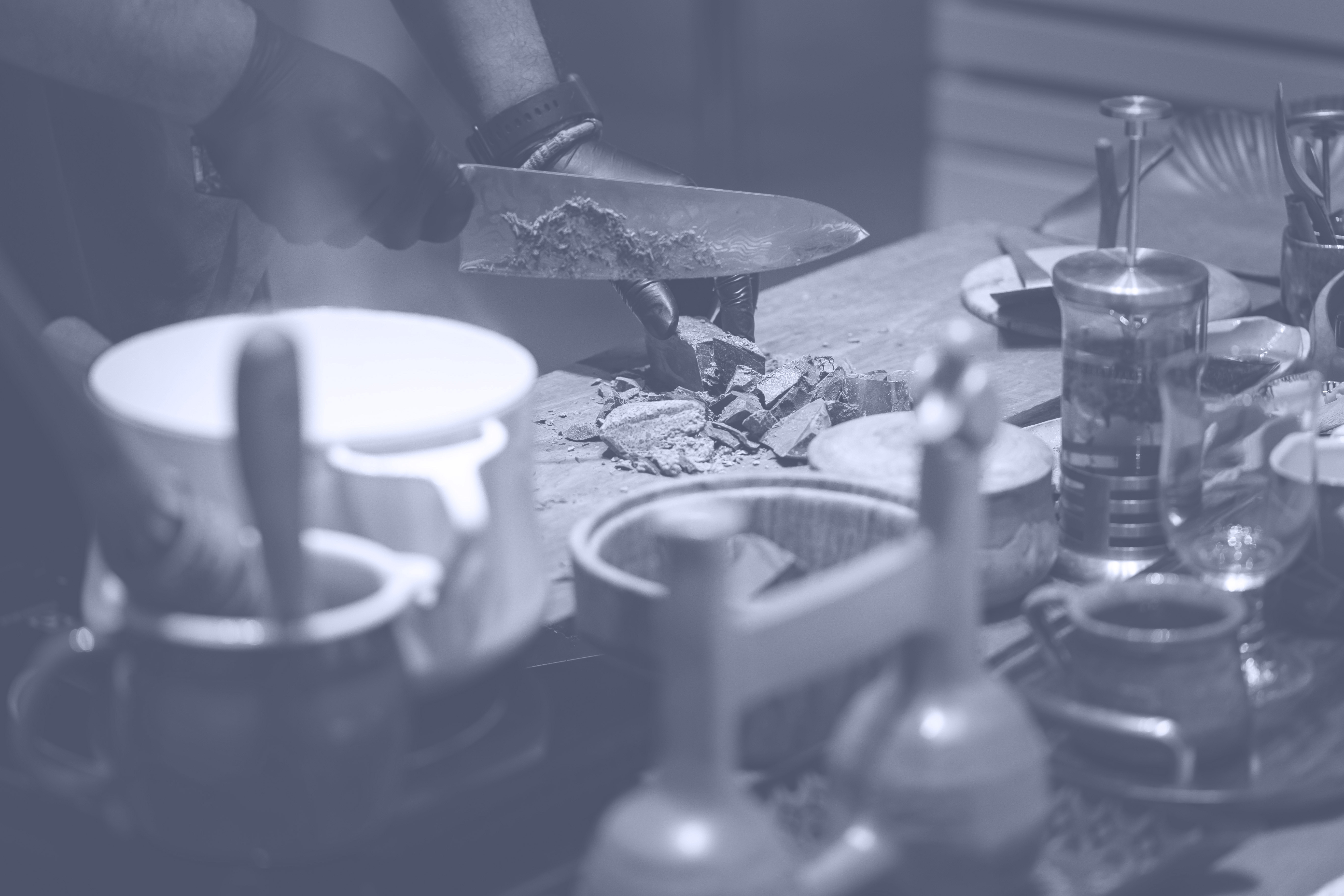
2020
Scientific Event
A journal article titled "Ayahuasca – potential therapeutic properties in psychiatry. Research review" describes a literature review in which authors discuss the potential therapeutic values of ayahuasca, which shows promise for treatment of mental illnesses and disorders, particularly depression.
Ayahuasca; DMT; review; addiction; treatment; MAOI
View Sources
2020
Legal Event
U.S. patent application US20210085671A1 filed on 11-11-2020 titled "Compositions and methods comprising a combination of serotonergic drugs" describing compositions and methods comprising a first serotonergic drug and a second serotonergic drug such as a purified psilocybin derivative, a purified cannabinoid, a purified terpene, a purified tryptamine, purified LSD, and/or purified MDMA to treat psychiatric disorders including addiction.
Drug combination; addiction; psychiatric disorders
View Sources
2021
Historical/Archival Event
A review article on the relationship between classic psychedelics and twelve-step approaches to addiction recovery. The authors conclude that the both the historical record and the scientific research demonstrate a need for integration methods like those offered in twelve-step groups.
classic psychedelics; substance use disorder; twelve-step groups
View Sources
2021
Scientific Event
A phase 1 clinical trial to determine the safety of psilocybin in adult patients with opioid use disorder concurrently taking buprenorphine/naloxone (Suboxone®).
psilocybin; opioid use disorder
View Sources
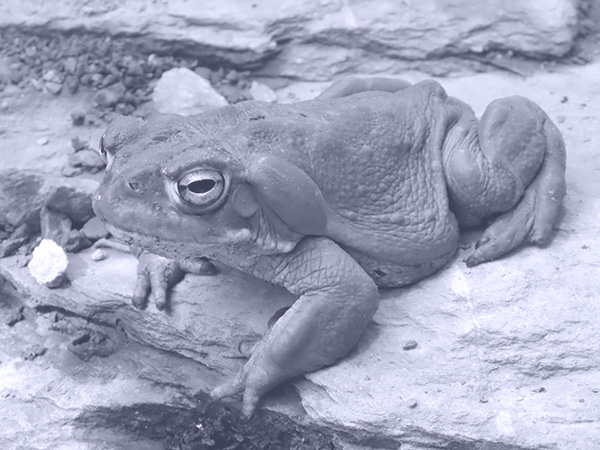
2021
Legal Event
U.S. patent US11013778B2 granted in 05-25-2021 titled "Nicotine free herbal composition for smoking de-addiction and treatment of side-effects and/or ailments from smoking" describing use of Kapikachu (Mucuna pruriens), native to Africa and tropical Asia, a tropical legume containing bufotenine, 5-MeO-DMT, DMT in its leaves. The patent claims use of a herbal composition for promoting smoking cessation in an individual with a nicotine addiction.
5-MeO-DMT; DMT; bufotenine; smoking cessation; nicotine addiction
View Sources
2021
Legal Event
U.S. patent US11207322B2 granted in 12-28-2021 titled "Method and composition related to combination therapy for addiction" describing methods of treating or preventing an addictive behavior in a subject by administering to the subject an effective amount of a 5-HT2C receptor agonist in combination with a DA D3/D4 receptor antagonist such as mCPP.
mCPP; addiction; 5HT2C receptor agonist; DA D3/D4 receptor antagonist
View Sources
2021
Legal Event
Porta Sophia Files a 3rd party preissuance submission for U.S. patent application US20210085671A1 titled "Compositions and methods comprising a combination of serotonergic drugs". The 3rd party submission was filed on 11-19-2021 with the USPTO. CaaMTech filed for Preliminary Amendment of claims on 12-16-2021.
View Press Release
2022
Scientific Event
A proof-of-concept randomized clinical trial of psilocybin-enhanced psychotherapy versus treatment-as-usual among individuals being treated for methamphetamine use disorder is pending to start.
psilocybin; psychotherapy; methamphetamine use disorder
View Sources